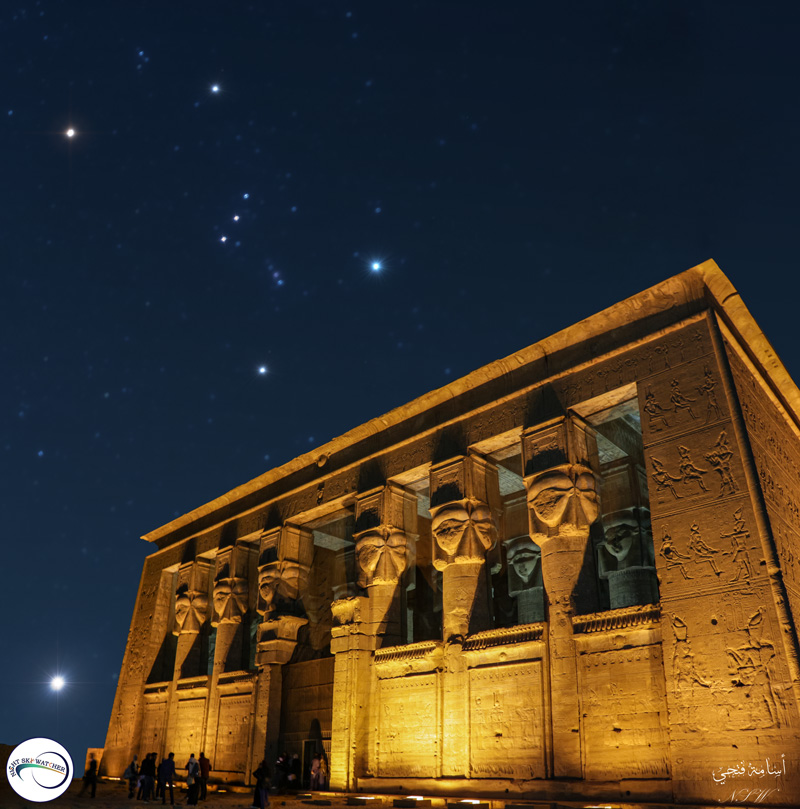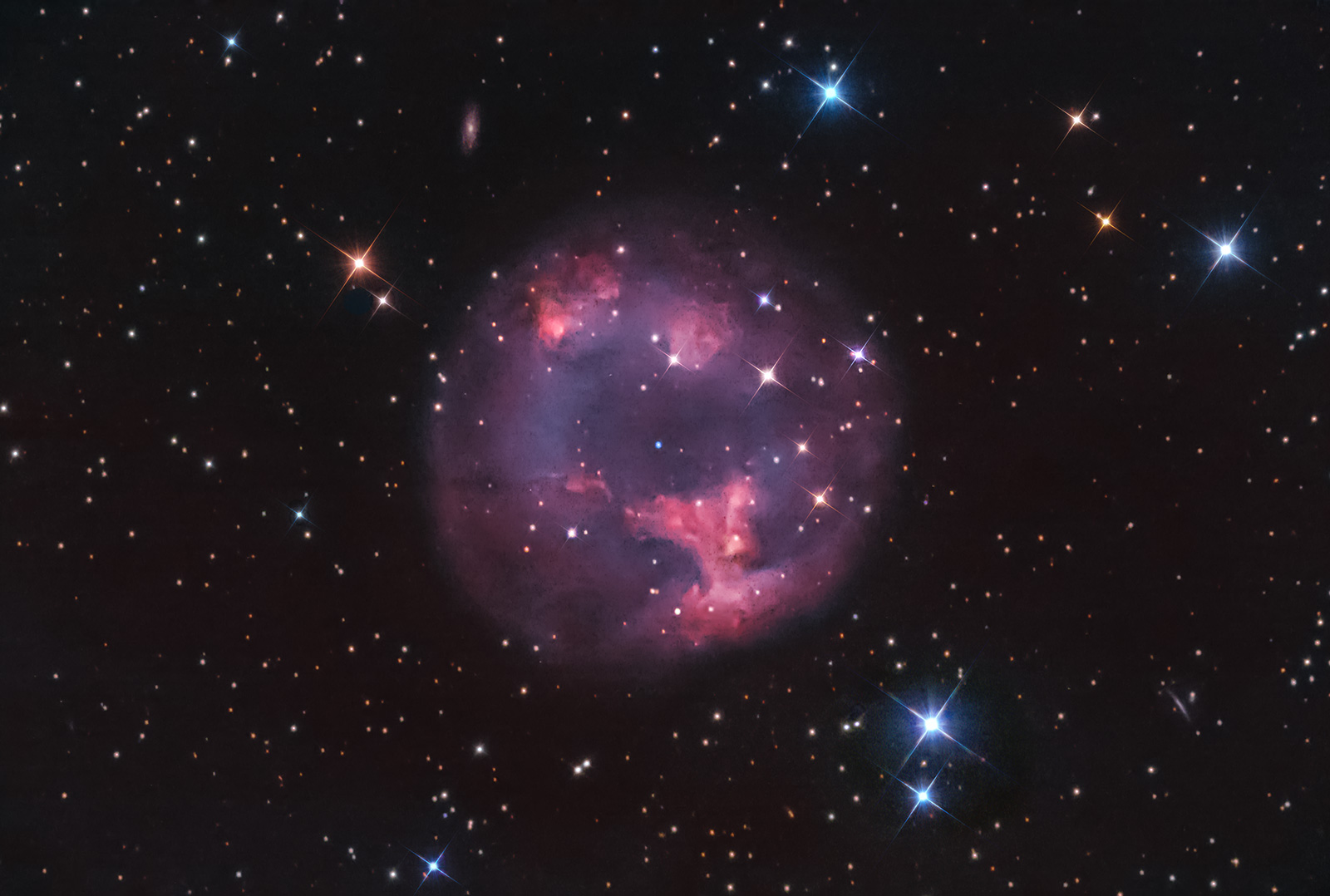Cosmic Fireworks | Coma Galaxy Cluster
Composite image created by Garrick Walles (c)
 Annotated | Coma Galaxy Cluster Composite
Annotated | Coma Galaxy Cluster Composite by
MessierX, on Flickr
 Cosmic Fireworks | Coma Galaxy Cluster Composite
Cosmic Fireworks | Coma Galaxy Cluster Composite by
MessierX, on Flickr
Also known as Abell 1656, the Coma cluster of galaxies lies more than 330 million light-years away and is dominated by the two major giant elliptic galaxies NGC4874 and NGC4889. Galaxy clusters such as these are the largest structures in the Universe held together by gravity.
The Coma cluster is large and spans more than 2 degrees in the sky. This corresponds to an angular size of four full moons. The motivation for this project was to create a wide-field view of the Coma cluster that incorporated X-ray data from the Chandra Observatory to give a better perspective of its true size and the interactions that take place within the central region. This image spans 1.71 deg by 1.24 deg and is centred on the two main elliptical galaxies. The X-ray emission region (calculated from the plate-solved image) spans about 21arcmin (2 million light-years).
This composite wide-field of view image was created using my data (wide field, 71mm William Optics GT APO, 400mm focal length, London, UK) together with image data from the Chandra X-Ray Observatory, the XMM-Newton (ESA) the Sloan Digital Survey and the Hubble Space Telescope (HST)
1,2. The three main components of this image consist of hot gas (responsible for the X-Ray emission), individual galaxies and dark matter.
The Chandra X-Ray data shown in pink represent the newly discovered long arms of hot gas discovered within the Coma cluster
3,4. The extended long arm features shown span at least 0.5 million light-years and has provided some insight into how the Coma cluster has grown through a series of accretions and mergers. It is estimated that these arms are about 300 million years old.
The entire structure is permeated by hot gas and these regions are shown in the blue and red hues in the image. These regions of hot gas were captured by XMM Newton's European Photo Imaging Camera (EPIC)
5,6,7.
D100
Incorporated into this image is the long gas tail of the spiral galaxy D100
9. The image is very faint due to the large field of view, The image insert shows where D100 has been inserted into the main image. The current model indicates that this Hα tail is a result of Ram Pressure stripping as D100 moves through the medium of hot gas within the galaxy cluster. The narrowness of the tail has been attributed to the influence of magnetic fields. It is an interesting exercise to imagine this tail being extended further to the right in the image insert.
References:
1. Chandra X-Ray Observatory, X-ray: NASA/CXC/MPE/J.Sanders et al, Optical: SDSS
https://www.chandra.si.edu/photo/2013/coma/
2. European Space Agency, XMM-Newton
, https://sci.esa.int/s/8dBdz5w
3. J. S. Sanders, A. C. Fabian, E. Churazov, A. A. Schekochihin, A. Simionescu, S. A. Walker, N. Werner, Linear Structures in the Core of the Coma Cluster of Galaxies.
Science, Volume 341, Issue 6152, pp. 1365-1368 (2013).
https://arxiv.org/abs/1309.4866 [astro-ph.CO]
4. Zhuravleva, I., Churazov, E., Schekochihin, A.A. et al. Suppressed effective viscosity in the bulk intergalactic plasma. Nat Astron 3, 832–837 (2019).
https://doi.org/10.1038/s41550-019-0794-z.
https://arxiv.org/abs/1906.06346
5.
https://www.esa.int/ESA_Multimedia/Imag ... scNqA.link
6, European Space Agency, Planck Survey
https://sci.esa.int/s/wb203qw
7. European Space Agency, Planck Survey
https://sci.esa.int/s/wx59jyW
8. NASA, APOD. "The Long Gas Tail of Spiral Galaxy D100". Image Credit & Copyright: NASA, ESA, Hubble, Subaru Telescope, W. Cramer (Yale) et al., M. Yagi, J. DePasquale. January 28, 2018.
https://apod.nasa.gov/apod/ap190128.html
9.Cramer, W. J. search by orcid ; Kenney, J. D. P. ; Sun, M. search by orcid ; Crowl, H. ; Yagi, M. search by orcid ; Jáchym, P. search by orcid ; Roediger, E. ; Waldron, W. Spectacular Hubble Space Telescope Observations of the Coma Galaxy D100 and Star Formation in Its Ram Pressure-stripped Tail. The Astrophysical Journal, Volume 870, Issue 2, article id. 63, 20 pp. (2019).
https://ui.adsabs.harvard.edu/link_gate ... 357/aaefff






















